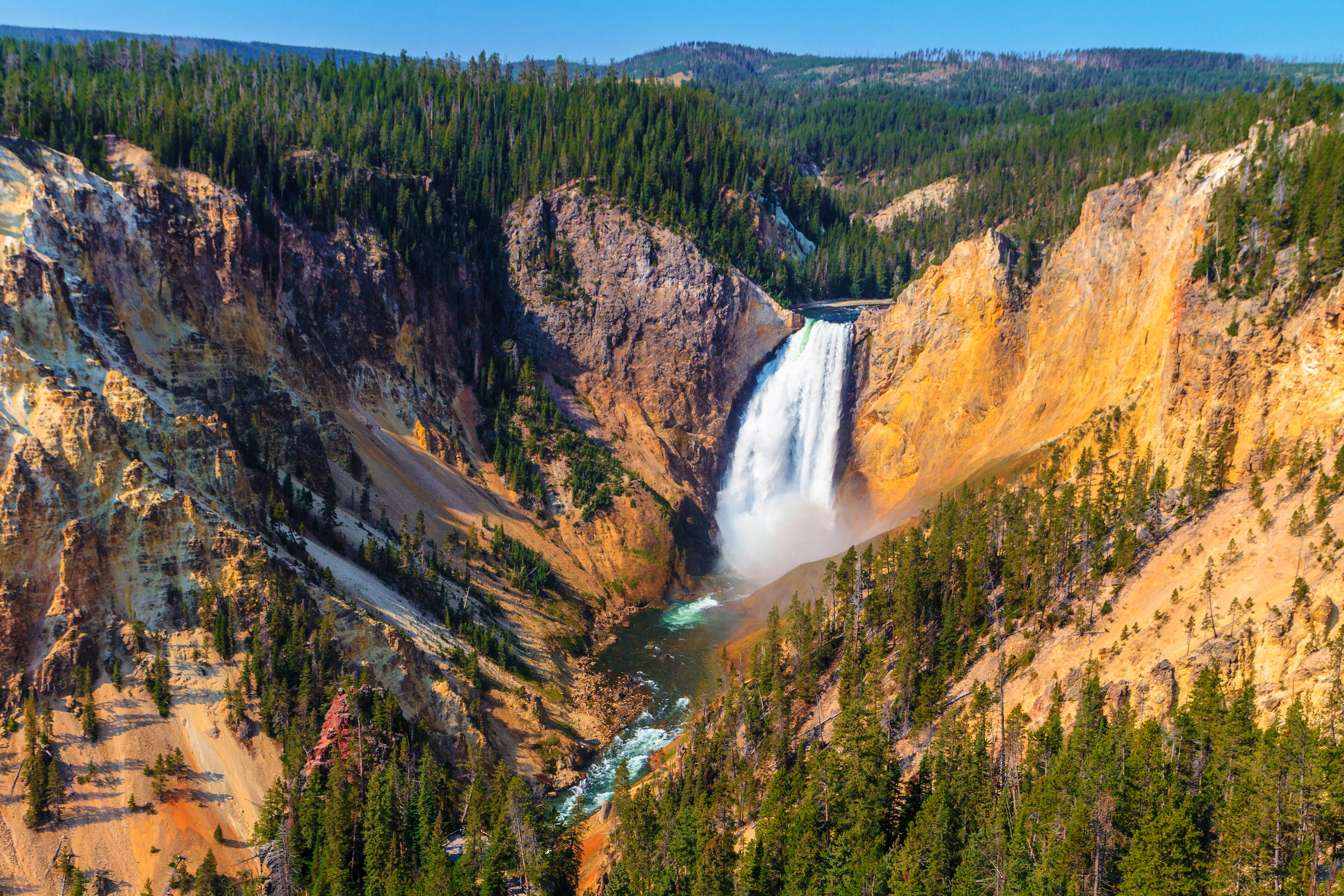Yellowstone National Park has more than 900 miles of hiking trails, offering ample opportunity to leave the crowds behind. Backpacking in Yellowstone is a great way to explore the more remote regions of the park and see spectacular wildlife, geysers and gorgeous high-altitude lakes. For more information about planning your trip, see our Yellowstone National Park Visitor Guide.
The following checklist is designed for a non-guided, non-winter trip in Yellowstone. If you’re part of a guided group, check with the guide company to see what items they provide. If you’d prefer to skip the planning, check out the REI guided adventures in Yellowstone.
Included in this list are the Ten Essential Systems you should have on every backcountry trip: navigation; sun protection; insulation; illumination; first-aid supplies; fire starter; repair kit and tools; nutrition; hydration; emergency shelter. To learn more, see our Ten Essentials article.
Equipment
- Backpack and raincover
- Tent with guylines and repair sleeve
- Tent footprint (optional)
- Sleeping bag (15° – 29°)
- Sleeping pad
- Whistle, plus signaling mirror
- Multifunction watch with altimeter
- Knife or multi-tool
- Compass
- GPS (optional)
- Map(s) and route description or guidebook
- Trekking poles (optional)
- LED headlamp with extra batteries
- Water treatment system and backup
- Stove and fuel
- Matches or lighter
- Cookset, dishes, bowls, utensils, cups (measuring/drinking)
- Stove
- Rope (30 ft.; for hanging food)
- Repair kits for stove, mattress; duct tape strips
- Fire starter (for emergency survival fire)
Clothing and Footwear
- Wicking, quick-drying underwear
- Wicking, quick-drying sports bra
- Wicking, quick-drying long underwear
- Wicking, quick-drying T-shirt and long-sleeve shirt
- Quick-drying pants (for added tick protection) or shorts
- Fleece jacket or vest, or insulated jacket or vest
- Fleece pants
- Midweight down or synthetic jacket
- Waterproof/breathable rain jacket
- Waterproof/breathable rain pants
- Bandana or Buff
- Sun-shielding hat or ball cap
- Winter hat
- Gloves or mittens
- Hiking boots or hiking shoes suited to terrain
- Socks (synthetic or wool) plus spares
- Gaiters (for added tick protection)
- Sandals (for fording streams and relaxing in camp)
- Swimwear (optional)
- Change of clothes to leave in car
Personal Items
- Sunglasses
- Water bottles (3) or hydration reservoirs
- Plastic zip-lock bags
- Bear spray
- First-aid kit (see our First-Aid Checklist)
- Quick-drying towel
- Camera or helmet cam and extra memory cards (all optional)
- Binoculars (optional)
- Cell phone in waterproof case (don’t rely on service)
- Satellite communicator or personal locator beacon (optional)
- Field guide(s); star identifier (optional)
- Outdoor journal, pen, reading material (optional)
- Fishing gear and permit (optional)
- Large garbage bags to keep items dry (optional; white recommended)
- National Parks pass (yearly pass available from REI.com)
- Credit card; small amount of cash
- Trip itinerary left with friend and under car seat
Toiletries
Many of the following items are optional; tailor the list to suit your personal needs.
- Toothbrush and toothpaste (travel size)
- Toilet paper
- Sanitation trowel
- Personal wipes
- Women’s hygiene items
- Hand sanitizer
- Sunscreen (SPF 30 or higher)
- Lip balm (SPF 30 or higher)
- Insect repellent (effective on ticks, mosquitoes and biting flies)
- Tick-removal tool (optional)
- Biodegradable soap
- Deodorant
- Dental floss
- Spare eyeglasses or contact lenses
- Prescription medications
Food
Quantity varies depending on activity and length of trip.
- Breakfast (oatmeal, granola, freeze-dried breakfast, etc.)
- Lunch (bagels, summer sausage, cheese, smoked salmon, etc.)
- Dinner (pasta, couscous, rice, freeze-dried dinner, etc.)
- Snacks (cookies, GORP, jerky, candy bars, dried fruit, etc.)
- Energy gels
- Energy bars
- Electrolyte replacement drink mix
- Extra day’s supply of food
